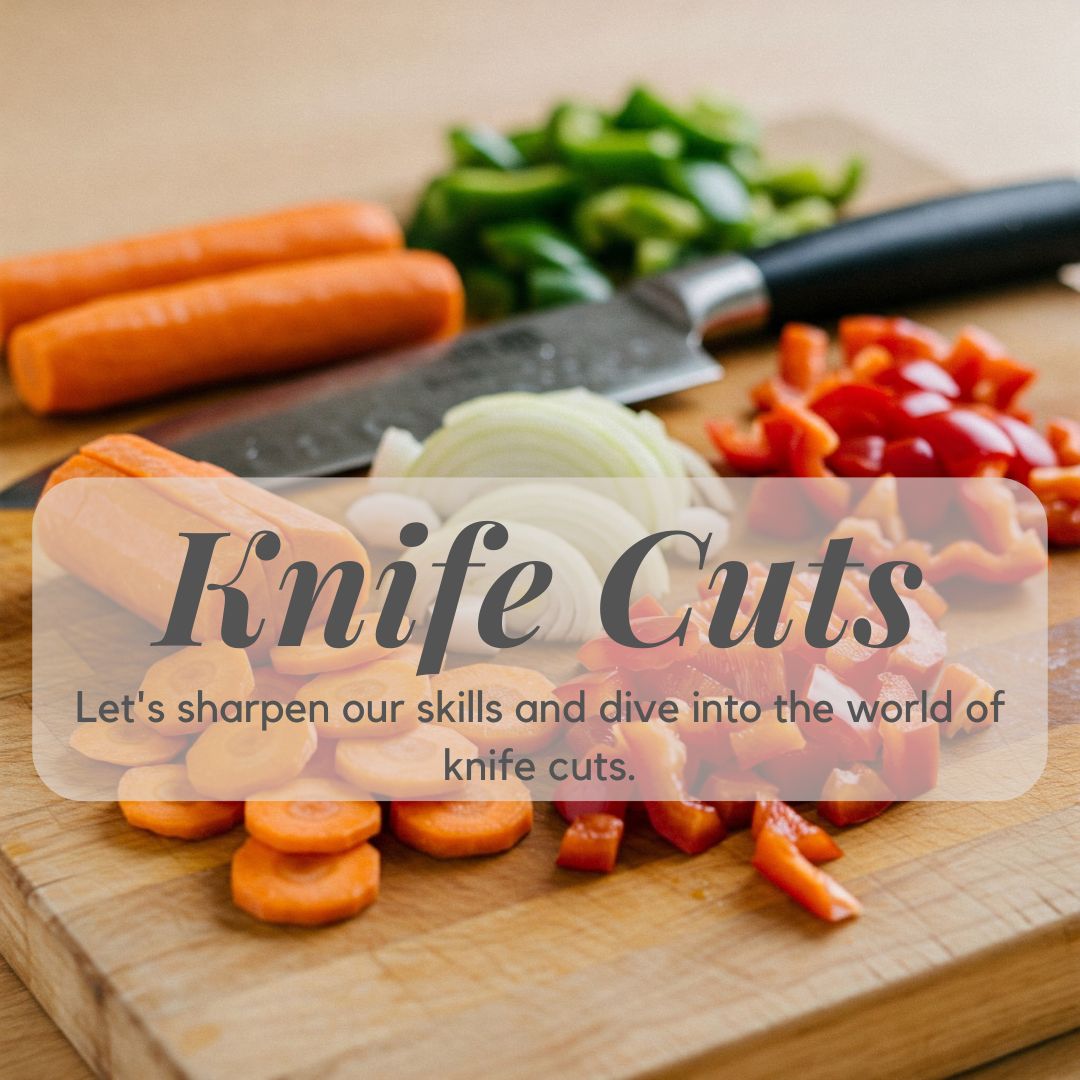Learning Knife Cuts

Last Updated on: 18th March 2025, 10:44 am
Sharpening Your Knife Skills
Welcome back to Your Ultimate Culinary Guide! In this section, we'll explore the art of knife cuts and how developing these techniques can enhance the presentation, texture, and flavor of your dishes. Let's sharpen our skills and dive into the world of precision knife cuts.
Exploring Knife Cuts
Knife cuts are fundamental techniques used in culinary arts to transform ingredients into uniform shapes and sizes. From julienne to chiffonade, each cut serves a specific purpose and adds visual appeal to your culinary creations.
Basic Knife Cuts:
- Chiffonade: a slicing technique in which leafy green vegetables such as spinach, sorrel, or Swiss chard, or a flat-leaved herb like basil, are cut into long, thin strips. This is accomplished by stacking leaves, rolling them tightly, then slicing the leaves perpendicular to the roll.
- Chop: Chopping describes a general method of cutting fruits, veggies, or other ingredients into smaller pieces than their original size. The size of the pieces and the roughness of the shape depends on the recipe
- Julienne: A knife cut that produces long, thin strips similar to matchsticks, perfect for vegetables used in stir-fries and salads.
- Mince: To finely chop ingredients into very small pieces, essential for incorporating aromatics like garlic and ginger into dishes.
- Dice: To cut ingredients into small, uniform cubes, used in recipes where even cooking and presentation are important, such as sauces and salsas.
Advanced Knife Cuts:
- Brunoise: A knife cut that results in tiny, uniform cubes. Often used for garnishing dishes and adding texture to sauces and soups.
- Paysanne: A knife cut that produces thin, even slices. Perfect for vegetables used in gratins, casseroles, and sautés.
- Batonnet: A knife cut similar to julienne but larger in size. Ideal for vegetables used in soups, stews, and stir-fries.
- Tourne: A knife cut that creates a seven-sided, oblong shape. Often used for root vegetables and potatoes in classic French cuisine.
- Rondelle: A knife cut that produces round slices. Commonly used for vegetables like carrots, zucchini, and cucumbers in salads and side dishes.
Developing Knife Techniques:
- Practice Proper Knife Grip: Hold the knife securely with your dominant hand and use your other hand to guide and stabilize the food.
- Maintain Sharpness: Keep your knife sharp by regularly sharpening it with a honing steel or sharpening stone to ensure clean and precise cuts.
- Use a Stable Cutting Surface: Work on a stable and flat cutting board to prevent accidents and ensure consistent cuts.
- Practice Patience and Precision: Take your time and focus on making clean, deliberate cuts to achieve professional-looking results.
Happy Cutting, Happy Cooking!
With practice and patience, you can master the art of knife cuts and elevate your culinary skills to new heights. Let precision in cutting be your secret ingredient to creating visually stunning and delicious dishes.
Bon Appetit,
Chef Abyssinia


